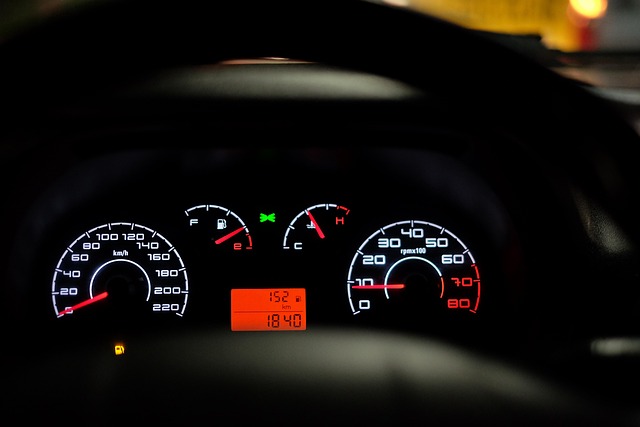“Looking to register your car in California? This comprehensive guide will walk you through the entire process, from understanding key requirements to securing your unique vehicle identification number (VIN) using a trusted DMV VIN verifier. Gather essential documents, visit your local DMV, complete the application, and pay registration fees—all in 6 simple steps. Ensure everything is in order and hit the road with confidence.”
- Understand California Car Registration Requirements
- Gather Necessary Documents for Registration
- Visit Your Local DMV and Complete Application
- Verify Vehicle Identification Number (VIN)
- Pay Registration Fees and Receive Your Plate
Understand California Car Registration Requirements

Before registering your car in California, it’s crucial to understand the state’s specific requirements. The California Department of Motor Vehicles (DMV) mandates several key steps for car registration, including a vehicle identification number (VIN) verification process. This step is often overlooked but is essential to ensure the vehicle’s history is accurately represented and to prevent potential issues in the future.
A reliable method to complete this requirement is by utilizing a DMV-approved VIN verifier, such as those offering mobile vin inspection services. These verifiers cross-check your vehicle’s unique 17-character VIN against numerous databases, including historical records, recall information, and reported accidents or damages. By engaging in this straightforward process, you can ensure your car registration goes smoothly and gain peace of mind regarding the vehicle’s authenticity and past.
Gather Necessary Documents for Registration

Before you begin the registration process, ensure you have all the required documents. The California Department of Motor Vehicles (DMV) requires several key pieces of information for car registration. Firstly, you’ll need proof of ownership, typically a vehicle title or bill of sale. Additionally, a current insurance card and proof of liability insurance are essential to demonstrate that your vehicle is insured against potential risks.
Another critical document is the Vehicle Identification Number (VIN) verifier, which can be obtained through a mobile VIN inspection or by visiting a DMV office. The VIN is a unique code that identifies your vehicle’s make, model, year, and other specifications, ensuring the accuracy of registration details. Remember to bring valid identification documents like a driver’s license or state-issued ID card to complete your registration at the DMV.
Visit Your Local DMV and Complete Application

To begin the registration process for your car in California, start by visiting your local Department of Motor Vehicles (DMV) office. Bring all necessary documents, including proof of ownership, vehicle identification number (VIN), and any other required paperwork. A DMV VIN verifier is a crucial tool that facilitates this step by ensuring the accuracy of the VIN provided on your vehicle’s title and registration documents.
At the DMV, complete the application for vehicle registration. This involves filling out forms, providing personal information, and paying the necessary fees. If you’re conducting a mobile vin verification or using a mobile vin inspector, ensure that all details are correctly inputted to avoid any delays in processing your application.
Verify Vehicle Identification Number (VIN)

Before you begin the registration process, it’s crucial to verify your vehicle’s Vehicle Identification Number (VIN). This unique 17-character code is a fundamental part of identifying your car and ensuring its authenticity. A mobile VIN verifier can be a convenient tool for this step, allowing you to check the VIN’s validity and accuracy from the comfort of your home or even while at a DMV office. By using a reliable mobile VIN inspection service, you can cross-reference the number with official databases, confirming that it matches the vehicle’s make, model, and year.
This verification process is more than just a formality; it safeguards against potential fraud and helps maintain the integrity of California’s vehicle registration system. With accurate VIN information, both owners and authorities can trace the car’s history, ensuring it has not been reported stolen or had any outstanding issues. Thus, taking this step with a mobile VIN verification service can streamline the registration process and provide peace of mind.
Pay Registration Fees and Receive Your Plate

After completing your vehicle’s registration application at the California DMV, the next step is to pay the required fees. This includes the registration fee and any additional costs based on your vehicle’s type and emissions status. You can typically pay online, by phone, or in person at a DMV office. Once your payment is processed, you’ll receive your license plate(s) and official registration documents.
It’s worth noting that many Californians opt for a mobile vin inspection or mobile vin verification service to streamline the process further. These services allow you to verify your vehicle’s identity (using the unique VIN number) and complete registration from the comfort of your home or workplace, saving time and effort compared to traditional in-person visits.
Registering a car in California is a straightforward process that involves understanding specific requirements, gathering essential documents, and visiting your local DMV. By completing the application, verifying the Vehicle Identification Number (VIN) using a trusted dvm vin verifier, paying the registration fees, and receiving your license plate, you’ll have taken a significant step towards legal and safe driving in the Golden State.
